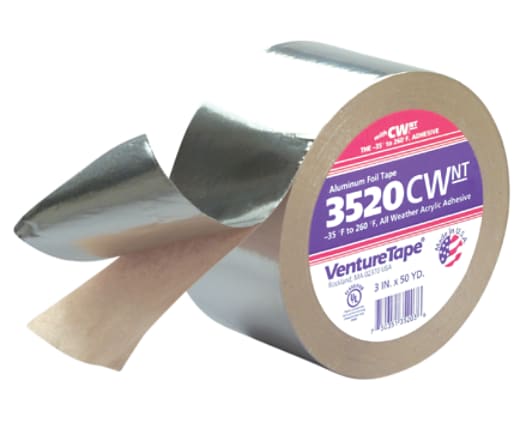Once And For All, It’s DUCK tape.
Once and for all folks, that gray stuff is ducK tape, not ducT tape.
Duck tape was developed by Johnson & Johnson’s Permacel division during WWII, in direct response to a military requirement for waterproof tape to seal ammunition cases during storage and transit into the tropical Pacific theater.

Something like this–but not like this.
The resulting tape, made of low-density polyethylene bonded to cotton webbing, was made in OD Green by a number of government contractors, and was naturally a big hit with the troops–who must have seen both the durable adhesive and tough, stretchy then-high-tech polymer backing as something out of Buck Rodgers. During the post-war building boom, manufacturers turned the tape gray and marketed it for everything from its original purpose and the general duty for which it’s now widely admired to–God help us–duct work installation.
But here’s the thing: duck tape is not, and never was, suitable for use on duct work. It doesn’t stick well to dusty surfaces, has poor resistance to long term moisture exposure, fungus, or pests, and both the adhesive and backing become brittle and deteriorate quickly when exposed to high heat. By the mid 1960s, tradesmen knew full well not to even think of using the stuff in an attic (a decade later, my uncle warned us against using it in his plumbing business). Duck tape may be “The handyman’s secret weapon,” but despite marketing and as least on brand name to the contrary, it was never “duct” tape. Indeed, Lawrence Livermore Labs, as part of a larger study of construction sealants in the late 1990’s, tested the gray tape in simulated attic conditions and found most brands failed within days, and all within months, calling the stuff “anything but duct tape.”
Of course, HVAC installers the world over did actually need duct tape, and by the 1970s, 3M and others had developed thermally stable adhesives which, when combined with an aluminum backing, made a watertight, air-tight, conformable tape that will stick to dirty surfaces, stay perfectly in place for decades–then come off without a mark. Today’s it’s sold by many manufacturers as HVAC tape–and it’s damn near as handy as the gray stuff ever was.


Once and for all? I doubt that, Stuart! I’ve been been fighting this one for years. Sisyphus wasn’t rolling a stone up hill — he was mucking about with “duck tape!”
Well there’s your problem. Duck tape won’t stick worth a damn to some mossy stone. If Sisyphus wants a vacation, he needs some sort of sling or barricade. He should look around, perhaps he could make some sort of rudimentary lathe… 😉
Very interesting, thank you. But why is called “Duck” tape? I’m guessing it has something to do with being moisture resistant, i.e. “like water off a duck’s back.”
The original was made from a type of cotton duck fabric. So for the same reason we say “cellophane tape.”